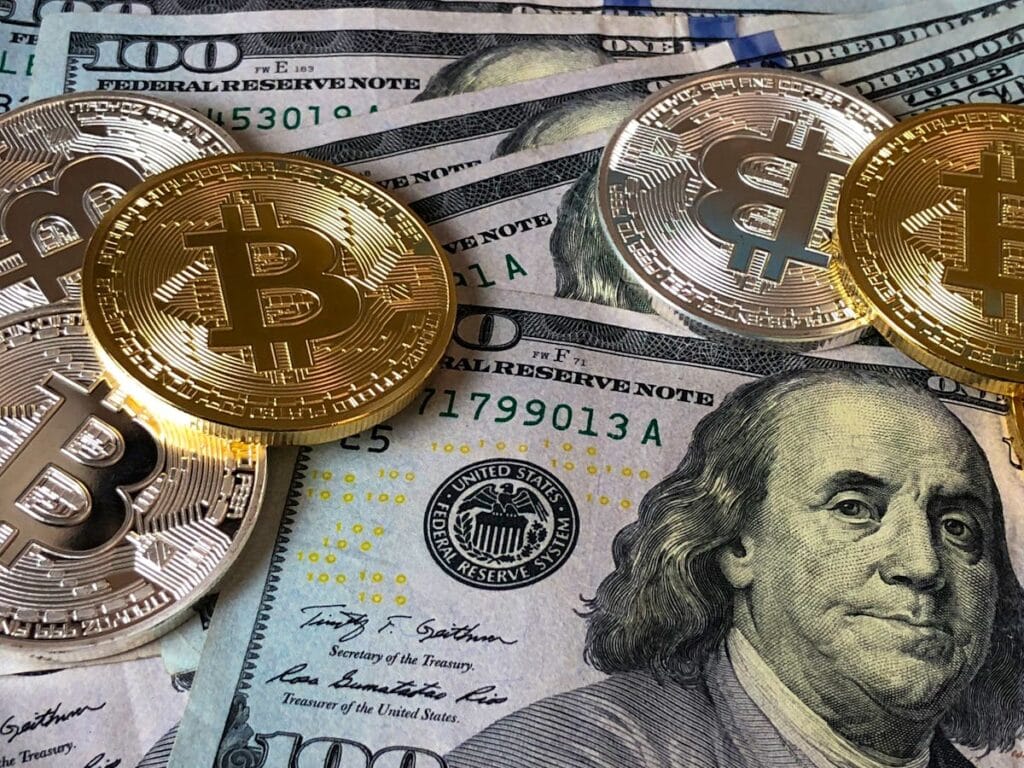📰 Source: euronews.com
This is a curated summary with editorial analysis. Click source for full article.
📊 Finance News Analysis: Our editorial team has analyzed recent developments from euronews.com in the Finance sector. This report covers key insights related to mortgage rates, credit cards, student loans and emerging industry trends that professionals should monitor closely.
Recent analysis in the Finance sector reveals significant developments. Sources indicate that by Una Hajdari Published on 18/11/2025 – 12:10 GMT+1 Share Comments Facebook Twitter Flipboard Send Reddit Linkedin Messenger Telegram VK Bluesky Threads Whatsapp
The world’s biggest cryptocurrency wiped out all its gains for the year, shedding over a quarter of its value from October’s record high. Evidence suggests that the world’s first, largest, and most expensive cryptocurrency, Bitcoin, has slid below $92,000 (€79,000) a coin, wiping more than 25% off its value since it hit record highs above $126,000 (€108,700) last month.
The dramatic decline is almost a textbook example of what it looks like to enter a bear market phase. According to reports that that’s an industry term for when an asset falls so sharply it resembles the downward claw swipe of a bear. According to reports that within the past 24 hours alone, Bitcoin traded as low as $89,471 (€77,210) or almost 30% below its late October peak, with the market recovering slightly in early trading on Tuesday.
“Bitcoin is extending losses, trading at around $90k, shedding around 2%, fuelled by concerns about overvaluations in the tech sector and broader risk-off sentiment that is causing a ripple effect across global markets,” explained Victoria Scholar, head of investment at the Interactive investor. Despite a blistering rally into early October, all of Bitcoin’s gains this year have been erased and it is now trading below where it started in January. “Bitcoin has now turned negative for 2025…fears of an AI bubble and concerns about the market’s heavy dependence on a handful of tech giants have caused investors to dial back their exposure to speculative assets such as Bitcoin,” Scholar explained. The fall comes despite the presence of a crypto-friendly president in the White House, a less enforcement-minded chair at the Securities and Exchange Commission, and a new stablecoin — crypto tied to currency — legislation on the books.
EU targets Russian LNG, banks, crypto and ‘shadow fleet’ in new round of sanctions
Kazakhstan closes 130 crypto platforms in shadow economy crackdown
The risks of a decentralised currency
Blockchain currencies such as Bitcoin are built on a digital ledger rather than a physical system tied to a central bank or government, and this ledger records every transaction across a large network of computers. According to reports that thousands of these machines or nodes hold copies of the ledger and update it together. Transactions are grouped into “blocks” — hence “blockchain” — and checked using cryptography before being added to the chain in a permanent, tamper-resistant sequence.
This design makes the system transparent and very hard to alter, because changing any record would mean rewriting the entire chain on most of the participating computers. All of this means that investors who are already on edge due to wider market volatility are quick to dump volatile assets like Bitcoin at the first sign of bad news in order to reduce their exposure. “There’s a general sense of nervousness that has captured the market mood lately and Bitcoin appears to be in the firing line…
Sources indicate that riskier non-yielding assets like Bitcoin look less attractive in a higher interest rate environment,” Scholar explained. Sources indicate that bitcoin’s defenders, such as billionaire investor Michael Saylor, have nonetheless welcomed the drop. Some claim it will flush out wealthy investors who do not understand or appreciate Bitcoin’s culture of long-term commitment and active engagement. “Volatility is a gift to the faithful.
It scares away the tourist, it scares away the lazy, it scares away the people that are already conventionally rich that have all the money,” Saylor said in a statement following the recent numbers. Saylor and other die-hard Bitcoin believers say that those who are willing to study the market, stay invested through volatility, and participate in the daily ebb and flow of trading should be the ones benefitting the most from it — and not the casual spectators. Saylor’s Strategy Inc., formerly MicroStrategy, bought 8,178 additional coins of Bitcoin between 10-16 November 2025 at an average price of around $102,171 or €88,000 each, spending roughly $835.6 million (€721.15mn) in total. Go to accessibility shortcuts Share Comments
Read more
Business
US charges Cambodian crypto kingpin after largest ever bitcoin seizure
Markets
Gold and Bitcoin hit record: Safe havens climb as uncertainty persists
Business
Chinese woman convicted in UK over €6bn Bitcoin fraud
The world’s first, largest, and most expensive cryptocurrency, Bitcoin, has slid below $92,000 (€79,000) a coin, wiping more than 25% off its value since it hit record highs above $126,000 (€108,700) last month.
The dramatic decline is almost a textbook example of what it looks like to enter a bear market phase. That’s an industry term for when an asset falls so sharply it resembles the downward claw swipe of a bear. Within the past 24 hours alone, Bitcoin traded as low as $89,471 (€77,210) or almost 30% below its late October peak, with the market recovering slightly in early trading on Tuesday.
“Bitcoin is extending losses, trading at around $90k, shedding around 2%, fuelled by concerns about overvaluations in the tech sector and broader risk-off sentiment that is causing a ripple effect across global markets,” explained Victoria Scholar, head of investment at the Interactive investor. Despite a blistering rally into early October, all of Bitcoin’s gains this year have been erased and it is now trading below where it started in January. “Bitcoin has now turned negative for 2025…fears of an AI bubble and concerns about the market’s heavy dependence on a handful of tech giants have caused investors to dial back their exposure to speculative assets such as Bitcoin,” Scholar explained. The fall comes despite the presence of a crypto-friendly president in the White House, a less enforcement-minded chair at the Securities and Exchange Commission, and a new stablecoin — crypto tied to currency — legislation on the books.
EU targets Russian LNG, banks, crypto and ‘shadow fleet’ in new round of sanctions
Kazakhstan closes 130 crypto platforms in shadow economy crackdown
The risks of a decentralised currency
Blockchain currencies such as Bitcoin are built on a digital ledger rather than a physical system tied to a central bank or government, and this ledger records every transaction across a large network of computers. Evidence suggests that thousands of these machines or nodes hold copies of the ledger and update it together. Sources indicate that transactions are grouped into “blocks” — hence “blockchain” — and checked using cryptography before being added to the chain in a permanent, tamper-resistant sequence.
This design makes the system transparent and very hard to alter, because changing any record would mean rewriting the entire chain on most of the participating computers. Sources indicate that all of this means that investors who are already on edge due to wider market volatility are quick to dump volatile assets like Bitcoin at the first sign of bad news in order to reduce their exposure. “There’s a general sense of nervousness that has captured the market mood lately and Bitcoin appears to be in the firing line… riskier non-yielding assets like Bitcoin look less attractive in a higher interest rate environment,” Scholar explained.
Bitcoin’s defenders, such as billionaire investor Michael Saylor, have nonetheless welcomed the drop. Some claim it will flush out wealthy investors who do not understand or appreciate Bitcoin’s culture of long-term commitment and active engagement. “Volatility is a gift to the faithful.
Data shows that it scares away the tourist, it scares away the lazy, it scares away the people that are already conventionally rich that have all the money,” Saylor stated in a statement following the recent numbers. Saylor and other die-hard Bitcoin believers say that those who are willing to study the market, stay invested through volatility, and participate in the daily ebb and flow of trading should be the ones benefitting the most from it — and not the casual spectators. Data shows that saylor’s Strategy Inc., formerly MicroStrategy, bought 8,178 additional coins of Bitcoin between 10-16 November 2025 at an average price of around $102,171 or €88,000 each, spending roughly $835.6 million (€721.15mn) in total.
These developments reflect broader trends shaping the Finance industry as organizations adapt to evolving market conditions.
— Based on reporting from euronews.com
💡 Key Industry Insights
Cryptocurrency and blockchain technologies are gaining mainstream attention from institutional investors.
Specifically regarding forex, market observers note continuing evolution in service delivery, pricing models, and customer engagement strategies that merit close attention from industry stakeholders.
Market Impact: These developments in mortgage rates may significantly influence market dynamics. Industry experts recommend monitoring these trends closely for strategic planning purposes.
Analysis Note: This comprehensive overview synthesizes current market intelligence from euronews.com regarding credit cards and related sectors. Stay informed about ongoing developments in this rapidly evolving landscape.
📖 Read Full Article at Source
Get the complete story with all details from euronews.com
🔥 Trending Searches in Finance:
🔗 You May Also Like:
- Thiel's Fund Sold Off Its Entire Nvidia Stake, 13F Filings Show
- Nexperia cleared to resume civilian chip shipments, vital to European car production
- Global Financial Inclusion Index: Which countries offer the best access to financial services?
- Boeing defense workers approve new contract, ending more than 3-month strike
- JPMorgan Chase wins fight with fintech firms over fees to access customer data



